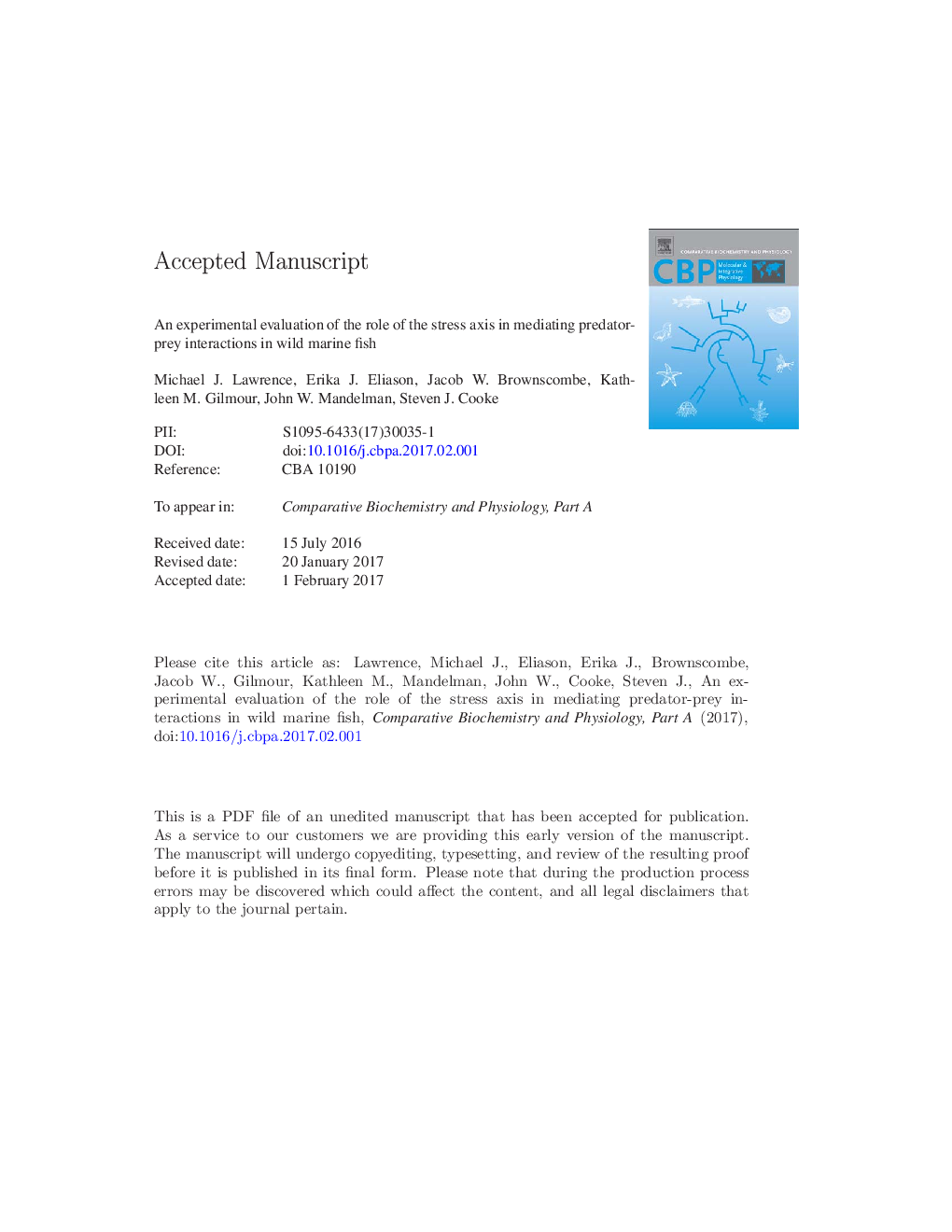| Article ID | Journal | Published Year | Pages | File Type |
|---|---|---|---|---|
| 5510332 | Comparative Biochemistry and Physiology Part A: Molecular & Integrative Physiology | 2017 | 34 Pages |
Abstract
The hypothalamic-pituitary-interrenal (HPI) axis, through corticosteroid secretion, is an integral mechanism regulating internal homeostasis when vertebrates are faced with a stressor. However, continued HPI-axis stimulation can produce homeostatic overload, where corticosteroids are detrimental to organismal function. This overload condition may play an important role in mediating predator-prey interactions, because chronically/previously stressed animals may have higher rates of predator-induced mortality. However, the mechanism(s) underlying this observation are unknown. Using fish as models, we hypothesized that chronic stress would increase predation susceptibility owing to a poor physiological state (e.g. homeostatic overload) with corresponding sub-optimal changes in predator-avoidance behaviour. As cortisol is also required in low quantities to help regulate basic metabolic functions in fish, we expected that a glucocorticoid receptor antagonist (GR; e.g. homeostatic failure) may produce similar effects. Schoolmaster snapper (Lutjanus apodus) were given intraperitoneal implants of cocoa butter impregnated with nothing (sham; 5Â ml/kg body weight (BW)), cortisol (50Â mg/kg BW) or the GR antagonist RU486 (100Â mg/kg BW). At 24-h post-implantation, fish were tethered to the seafloor and observed for behavioural metrics associated with predation. Blood samples were collected from a subset of fish to assess the physiological consequences of the implants. Cortisol- and RU486-implanted fish both had significantly higher plasma cortisol concentrations than sham fish, with blood glucose and plasma urea being elevated only in the former. Further, anti-predator behaviours and predation mortality did not differ significantly among treatments. Despite changes in physiological state, predation susceptibility was unaffected, a finding that may reflect the complex relationships linking the physiology and behaviour of an organism as well as potential tethering artefacts.
Related Topics
Life Sciences
Biochemistry, Genetics and Molecular Biology
Biochemistry
Authors
Michael J. Lawrence, Erika J. Eliason, Jacob W. Brownscombe, Kathleen M. Gilmour, John W. Mandelman, Steven J. Cooke,
